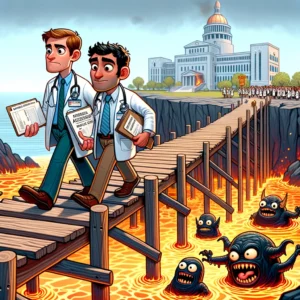10 Questions About Diversity Essays

Perhaps no part of college or graduate school applications confuses people more than the diversity statement. Since we began helping applicants in 2008, Gurufi has helped hundreds of candidates craft compelling diversity statements, but so many times our consultations begin with them asking, “what am I even supposed to write here!?!?” This is especially true of international applicants applying to American schools, where discussions of diversity are more important.
In short, diversity statements offer a platform for applicants to highlight their unique backgrounds, experiences, and perspectives, demonstrating how they can contribute to a diverse and inclusive academic environment. Schools have repeatedly professed a desire in the educational benefits of diverse classes, so they use these statements to help build incoming cohorts that reflect a range of experiences, backgrounds, ethnicities, genders, and beliefs. Given this, how should you approach writing a powerful, honest, and effective diversity statement? In this blog post, we address ten common questions about diversity essays, providing insights and tips to help you craft a compelling and effective essay.
1. What is the purpose of a diversity essay?
The purpose of a diversity essay is to provide admissions committees with a deeper understanding of your unique background and experiences, and how these have shaped your perspectives and contributions. It allows you to showcase your ability to contribute to the diversity of the academic community and how your unique experiences have prepared you to succeed in a diverse environment. This essay helps the committee understand the value you bring to the institution beyond your academic achievements.
These essays emerged out of a changing American legal landscape where affirmative action (the country’s decades-old system of bringing greater racial and ethnic diversity to various educational and professional positions) was challenged and limited in certain ways. In short, schools can no longer ask applicants for their race for purposes of admission, BUT they may take a broader view of background as expressed through personal statements and diversity statements. Thus, to put a crass outcome-focused spin on it: if you’re from a background that’s traditionally underrepresented, here is a good place to explain that so that you can be identified as an applicant who, while otherwise qualified and prepared, would also add to the school’s diversity.
2. How can I effectively showcase my unique background in a diversity essay?
To effectively showcase your unique background, focus on specific experiences that highlight your identity, culture, and personal journey. You can’t just say, “I’m Black” or “I’m gay.” You have do the additional work of providing a narrative or story that makes clear how this demographic reality has shaped your experience, worldview, or aspirations. Discuss challenges you have faced and overcome, and how these experiences have transformed you or altered your trajectory. Be honest and authentic in your storytelling, and provide concrete examples that illustrate your unique perspective and contributions. Reflect on how your background has influenced your academic and professional goals and how you plan to leverage these experiences in your future endeavors.
3. What are some common topics for diversity essays?
Common topics for diversity essays include:
1. **Cultural Background:** Discuss your cultural heritage, traditions, and how they have influenced your identity.
2. **Challenges and Overcoming Adversity:** Describe significant obstacles you have faced and how you overcame them.
3. **Unique Experiences:** Highlight experiences that are unique to your background, such as growing up in a diverse community or being a first-generation college student.
4. **Community Involvement:** Share your involvement in community service or advocacy efforts that reflect your commitment to diversity and inclusion.
5. **Personal Growth:** Reflect on moments of personal growth that have shaped your values and perspective on diversity.
If you’re not from an underrepresented background and write an essay like this, then you have one of two choices. First, you can take a more expansive view of diversity that might include diversity of opinion, professional experience, or other aspects of your background. Second, (and far more complicated!!) you could acknowledge that you don’t come from such a background, but talk in substantive ways about how you have and will contribute to supporting diverse populations.
4. How can I connect my personal experiences to my academic goals in a diversity essay?
Connecting your personal experiences to your academic goals involves reflecting on how your background has influenced your academic interests and career aspirations. Discuss specific experiences that sparked your passion for your chosen field and how they have prepared you for academic success. Explain how your unique perspective will contribute to the academic community and how the program you are applying to will help you achieve your goals. Highlight any relevant skills, insights, or perspectives gained from your experiences that are applicable to your academic and professional aspirations.
I often ask clients to “tell me your origin story,” as though they’re a superhero who has to explain why they’ve elected to pursue this path. Thinking of background this way can provide ideas for a unique diversity statement.
5. What mistakes should I avoid in a diversity essay?
Common mistakes to avoid in a diversity essay include:
1. **Being Vague:** Avoid broad generalizations and provide specific examples and detailed descriptions. The best way to avoid this pitfall is through thoughtfully selected stories.
2. **Overemphasis on Hardships:** While discussing challenges is important, balance this with reflections on growth, resilience, and positive outcomes. Whatever challenge you’ve faced, the most important part of that story is your response to it.
3. **Ignoring the Prompt:** Ensure your essay addresses the specific question or prompt provided by the application.
4. **Neglecting to Proofread:** Spelling and grammatical errors can detract from your professionalism. Proofread your essay multiple times and consider having others review it.
5. **Lack of Authenticity:** Be genuine and honest in your writing, avoiding exaggerated or fabricated experiences. This is a real problem because often people don’t know what to write so they simply regurgitate what they expect their audience wants to hear.
6. How can I make my diversity essay stand out?
To make your diversity essay stand out, focus on authenticity, clarity, and compelling storytelling. Here are some tips:
1. **Be Yourself:** Let your unique voice and personality shine through your writing.
2. **Tell a Story:** Use a narrative structure to make your essay more engaging. Share specific anecdotes that highlight your key qualities and experiences.
3. **Show, Don’t Just Tell:** Use concrete examples to illustrate your points rather than making broad statements.
4. **Connect the Dots:** Clearly link your past experiences, present motivations, and future goals.
5. **Tailor to Each School:** Customize your essay for each program, highlighting why you are a great fit for their specific offerings.
7. How should I structure my diversity essay?
As with any essay, there is no set way that you MUST structure it. Rather, there are easier and harder ways, and ways that are better or worse suited for the kinds of things you want to emphasize. If that was a frustratingly vague answer, here is a sample(and only one; yours doesn’t have to be this way!) format you can use for your essay:
- **Introduction:** Start with a compelling story that captures the reader’s attention and introduces the main theme of your essay. Don’t try to write a hook. Those come across as gimmicky and forced.
2. **Body:** Divide the body into several paragraphs, each focusing on a specific aspect of your background, experiences, and goals. Use this section to provide detailed examples and reflections.
3. **Conclusion:** Summarize the key points of your essay and reiterate how your unique experiences will contribute to the academic community. End with a strong closing statement that leaves a lasting impression. A good tip is to return to your introduction and look at the ideas, words, phrases, and images you used. Select some to sprinkle throughout your conclusion. This will give the essay a sense of completeness, of coming full circle… as opposed to just stopping.
8. How can I highlight my contributions to diversity in a diversity essay?
Highlighting your contributions to diversity involves discussing specific actions you have taken to promote diversity and inclusion. Share examples of your involvement in diversity-related initiatives, advocacy efforts, or community service projects. Explain the impact of these activities and how they reflect your commitment to fostering an inclusive environment. Reflect on what you have learned from these experiences and how they have prepared you to contribute to the diversity of the academic community you are applying to.
9. What role does storytelling play in a diversity essay?
Storytelling plays a crucial role in a diversity essay as it makes your experiences and insights more relatable and engaging. Using a narrative approach allows you to illustrate your points with vivid, concrete examples that capture the reader’s interest. Stories help to humanize your essay, making it easier for the admissions committee to connect with you on a personal level. Effective storytelling involves setting the scene, describing the challenge or experience, and reflecting on the outcome and lessons learned.
10. How do I conclude a diversity essay effectively?
Concluding a diversity essay effectively involves reinforcing the key themes of your essay and leaving a lasting impression. Here’s how to craft a strong conclusion:
1. **Summarize Key Points:** Briefly recap the main themes of your essay without repeating them verbatim.
2. **Restate Your Contributions:** Reiterate how your unique background and experiences will contribute to the academic community.
3. **End on a Strong Note:** Use a powerful closing statement or call to action that underscores your enthusiasm and readiness to contribute to a diverse and inclusive environment.
Writing a compelling diversity essay requires thoughtful reflection and a clear presentation of your unique experiences and contributions. By addressing these common questions and incorporating the advice provided, you can craft an essay that authentically represents your background and demonstrates your commitment to diversity and inclusion. Remember to be genuine, specific, and reflective in your writing, and you will create a compelling narrative that resonates with admissions committees.
For more help with your personal statement, check us out at Gurufi.com. Our personal statement editors and consultants have decades of experience helping clients get into top Masters and Ph.D. programs in STEM, humanities, fine arts, and social sciences. Our specialty is helping you craft compelling personal statements that move the needle in your admissions process! For questions, shoot us an email at service@gurufi.com. Check us out on Facebook, Twitter, and LinkedIn.





